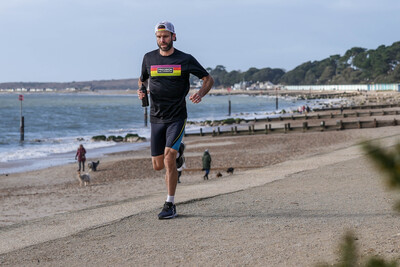The competitive environment in endurance running is an interesting place these days. The half-marathon distance is still ever-so-popular: challenging yet approachable, whether you’re a novice runner or a seasoned veteran. On the other end of the spectrum, the appeal of ultras continues to be on the rise: why worry about how fast you can go when you can see how far your legs will take you in a breathtaking environment?
Lying in the not-so-appealing middle is the marathon, the ultimate test of speed and endurance. An event that, if you’re really racing it, will challenge you in ways no other distance can replicate.
It’s no wonder a lot of people look for alternative options and find excuses for avoiding it: the marathon is short (and fast) enough to really sting, and also long enough to get ugly. Not to mention the margins for error are miniscule. If you have a weakness or make a critical mistake, the marathon will undoubtedly expose it.
Bottom line: You can’t fake your way through one!
I personally have a love/hate relationship with the marathon. As an athlete, I’ve competed in (and completed) 12 of them and, admittedly, it’s not my favorite distance to race. It's the event I get most excited to coach, because of how challenging and complex both the preparation and execution are, no matter if you’re a first-timer or an Olympic hopeful. There are so many variables to account for and get right if you want to have a successful day.
In this article I’ll explore what goes into a successful day, specifically the four things every marathoner needs to nail in order to ensure they’re well prepared for the ultimate endurance running exam...
You have to run long and fast (at the same time)
This might seem obvious but in my experience many coaches and athletes get this part of the preparation wrong and are left scratching their heads as to what happened. They’ll run fast a couple times during the week and then log a long, slow run on the weekend. When race day comes around, these athletes often either run out of gas and/or their legs start rebelling early on in the race.
If you’re trying to go fast on race day, whatever that means for you, it’s imperative that you practice running long and fast a few times in the lead-up (but not every day).
To quote the great Italian coach Renato Canova, who has guided more champions and record-holders than perhaps anyone else in history:
At the end of every discussion, the question is:
[Do] I want to try to reach my best potential results, or [do] I want to be fresh every day, running only for my health and my fun? In the first case you must use long and fast run, with a correct modulation.
In the second case, run slowly and enjoy your life, but don't speak about good results in athletics.
A lot of easy miles are essential
Wait, but isn’t this counter-intuitive to the first point? Au contraire.
You can’t run long and fast all the time, otherwise you’d likely be tired and injured all the time. In between the demanding marathon-long runs (which you really should only do at a frequency of 2-3 times every four weeks or so) and regular speed workouts faster than marathon pace, you need to run as many easy miles as possible to recover, absorb the benefits of your quality workouts, and keep your overall training volume high.
How easy is easy? I generally recommend these runs to be at least 60–90 seconds per mile slower than your marathon pace. For the 3:30 marathoner, that means somewhere between 9:00–9:30 per mile on your easy runs (if not slower - you really can’t go slow enough on your easy days).
In fact, 75 to 80 percent of your weekly training volume should be easy running at a comfortable, conversational pace.

Nail the fueling piece
Racing a marathon is a high-octane endeavor and you can’t perform your best if you’re running on fumes most of the race. You can get away with taking in less calories and carbohydrate if you’re running slow, but when you’re trying to run fast for prolonged periods of time, the fueling demands are high.
As such, it’s absolutely imperative that you practice dialing in your fueling and hydration plan in the weeks and months leading up to race day. You can train your body to adapt to almost anything but it’s going to be limited in what it can do on an empty tank.
Beyond the noted performance advantages of nailing your race nutrition, your body will recover faster and more fully if it’s not fully depleted when you cross the finish line (this goes for your big training runs as well as race day).
I’ve seen many a marathoner’s day ruined because they didn’t nail the fueling piece — don’t let this be you! Practice it over and over and over again in training so that it doesn’t become your limiting factor or point of failure on race day.
Practice patience (and pacing)
In the 19 years I’ve been helping athletes prepare to race marathons, not once has anyone ever told me, “I wish I had gone out a little bit faster.” However, I would need several more hands to count the number of times the opposite has held true.
Most marathoners tend to get too excited too early in the race, let insecurity get the best of them, and/or overestimate their fitness, causing them to be hanging on by a thread at the end of the race, rather than running hard through the finish.
Repeat this with me: There is no banking time in the marathon.
At the top level of the sport, the winners of most marathons and nearly every record of significance that’s ever been set has been done so by way of even or negative split, meaning they ran the second half of the race as fast or faster than the first half.
And while most of us can’t fathom running as fast as those folks at the very front of the field, we can learn to execute like they do on race day: with patience. This is a skill that any marathoner can develop with practice. Learn to run relaxed and within yourself early so that you can set yourself up to close with confidence late.
